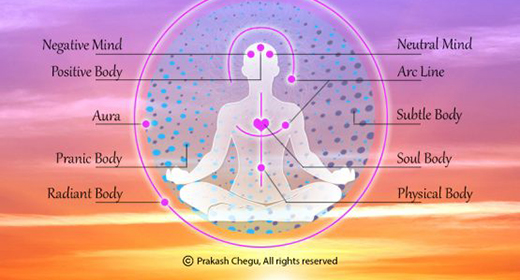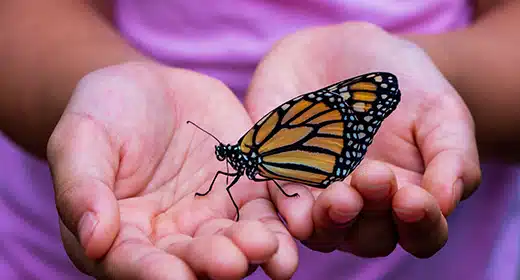by Jack Kornfield: When Harvard psychologist Jack Engler was doing his research with my teacher Dipama, he asked her about

one of the common misunderstandings of Buddhist teachings. “This all sounds very gray,” he said. “Getting rid of greed, getting rid of hate, getting rid of ignorance. Where’s the juice?” “Oh, you don’t understand!” Dipama burst out laughing. “There is so much sameness in ordinary life. We are always experiencing everything through the same set of lenses. Once greed, hatred and delusion are gone, you see everything fresh and new all the time. Every moment is new. Life was dull before. Now, every day, every moment is full of taste and zest.”
We have seen how joy can come in deep meditation. Students describe trembling, tears of laughter, cool waves, ripples of ecstasy, floating joy, joy like turquoise water, bodily thrilling, grateful joy, playful, delighting joy and ecstasy of stillness. They describe joy in the body, heart and mind, joy in the beauty of the world and joy in the happiness of others.
Sometimes people mistake Buddhism for a pessimistic view of life. Certainly the Noble Truths teach about suffering and its causes and in Buddhist countries there are a few very serious, grim–duty style meditation masters. I, myself, like many other Westerners, sought them out. I was so determined to transform myself and attain some special realization that I went to the strictest monasteries and retreats, where we practiced 18 hours a day and sat unmoving in the face of enormous pain. And at these monasteries I learned many important things.
But somehow in the seriousness of my quest, I failed to notice the extraordinary buoyancy of the Buddhist cultures around me. Seeking austerity, we serious Westerners failed to notice that most Buddhist temples are a riot of colors, filled with paintings and statues and images of fantastic stories of angels, devas, bodhisattvas and Buddhas. We ignored the community life that centered around the temples, the cycles of rituals, dances, celebrations, feasts and festivals. In our ardor, we did not appreciate how many of our greatest teachers, Ajahn Chah, Maha Ghosananda, Ananda Maitreya, the 16th Karmapa, Anagarika Munindra, had marvelous, easy laughs, and an infectious sense of joy.
When I returned to the United States and began to teach, my colleagues and I tended to emphasize the Buddha’s teaching on suffering and the need to awaken. We were young and the focus on human suffering gave our retreats a seriousness and gravitas. Now in the retreats I teach, I also encourage participants to awaken to their innate joy. From the very beginning I encourage them to allow the moments of joy and well-being to deepen, to spread throughout their body and mind. Many of us are conditioned to fear joy and happiness, yet joy is necessary for awakening. As the Persian mystic Rumi instructs us. “Do not sit long with sadness my friends. When you enter a garden do you look at thorns or flowers? Spend more time with roses and jasmine.”
When we are in the midst of our difficulties, we may think that Rumi’s words make joy sound too easy. The gold of our true nature can be hidden for years by clay. But as we willingly release the old clay of our suffering, the gold shines through. André Gide, French novelist and philosopher, enjoins us not to settle for a life of sorrow. “Know that joy is rarer, more difficult, more beautiful than sorrow. To make this discovery is to embrace joy as a moral obligation.”
Psychologists working with the Tibetan community in exile have noted the remarkable resiliency and joyfulness among them, even though many are survivors of great trauma and loss. Most surprising are the responses of nuns and monks who have been imprisoned and tortured. According to a study by Harvard psychologists, they show little or none of the ordinary signs of trauma, but instead have deepened in compassion and joyful appreciation of life. Their trainings in lovingkindness, compassion, and wisdom led them to pray for their enemies. One old lama recounted that over the twenty years of prison and torture, his only true fear was that he would lose his compassion and close his heart. If we want to understand optimal mental health, these monks and nuns are a striking example.
Debra Chamberlin-Taylor, a Buddhist teacher and colleague, tells the story of a community activist who participated in her yearlong training group for people of color. This woman had experienced a childhood of poverty, trauma, and abuse. She had faced the death of a parent, illness, divorce from a painful marriage, racism, and the single-parenting of two children. She talked about her years of struggle to educate herself, to stand up for what she believed. She described how she had become a radical to fight for justice in local and national politics. Finally at the last meeting this woman announced, “After all the struggles and troubles I’ve lived through, I’ve decided to do something really radical! I am going to be happy.”
Just as we can re-awaken to loving-kindness, we can re-awaken joy. It is innate to consciousness. As we find it in ourselves, we can see it in others. On one long spring retreat, Lorna, a young woman came to me to talk to about her reaction to one of the retreatants. She was having trouble with a big man seated nearby. He moved too often. Bill was an old ex-marine whose T-shirts revealed lots of tattoos. He smelled of tobacco smoke. His energy frightened her. Lorna tried to understand. She used loving-kindness practice and discovered how Bill triggered her painful history with men. Gradually, Lorna realized that most of what bothered her was her own imagination. Still it seemed like a scary thing to talk to someone like Bill. Then, in the last week of retreat, Lorna came in to see me, grinning. “I’m not afraid of him anymore.” She explained. After breakfast she had walked down to the stream below the dining hall. She came upon the marine there among the banks of flowers, cupping each one deliberately in his hands to smell its fragrance. On the last day of the retreat I saw Lorna in a joyful and animated conversation with Bill, standing near the flowers.
Just as loving-kindness and compassion can be developed through training, there is a practice for joy. To cultivate joy, we begin by picturing someone we love in a happy moment, and feeling their well being. Then we recite the intention, “May your happiness and joy increase. May the causes for your happiness increase,” repeating these intentions again and again, through any resistance, until joy becomes strong. Next, we systematically extend this practice to others we love, then to ourselves and gradually to all categories of beings. As we train ourselves to celebrate the joy and success of others, we awaken the radiant abode of joy. With joy whatever we do becomes holy. Martin Luther King understood this when he said, “If a person sweeps streets for a living, they should sweep like Michelangelo painted, like Beethoven composed music, like Shakespeare wrote his plays.”
The world we live in is a temple, and the miraculous light of the first stars is shining through it all the time. In place of original sin, we celebrate original goodness. St. Theresa of Avila explains, “God does not desire the soul to undertake any labor, but only to take delight in the first fragrance of the flowers… the soul can obtain sufficient nourishment from its own garden.” In every meeting of the eyes and every leafing tree, in every taste of tangerine and avocado, a blessing occurs. This is true mental health.
This excerpt is taken from the book, “The Wise Heart”









































